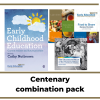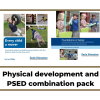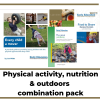Taking risks in play
Human beings are “hardwired” to take risks, from birth. Babies take their first independent breaths; they decide to try crawling and walking and then running;
Risk is a natural part of our existence, as we look to explore and make sense of the world around us. What is key is undertaking a Risk Benefit Analysis – to work out whether an activity is genuinely risky, what the benefits are, and what can be put in place to mitigate or reduce the chance of any risks actually occurring. During our Outdoors and Active Project, this was also a factor – and so we developed some suggested guidance on the topic which we’ve included below. In order to explore the wider world – it’s vital that the world isn’t just brought in, but that children go out and experience place for themselves – and so carefully understanding and being aware of these potential issues as practitioners enables us to support and scaffold these explorations more effectively. It will maximise their educative benefit, and the learning for all the children involved.
Human beings are “hardwired” to take risks, from birth. Babies take their first independent breaths; they decide to try crawling and walking and then running; they try new foods; they see a tree and want to climb it. Sadly, an increasingly risk averse society is making it difficult for young children to explore the wider world around them. Play and first hand experiences are the key ways in which young children learn the skills and abilities they need for life, we do them no favours by preventing them from pushing the boundaries of their physicality. Even the Health and Safety Executive says, “The goal is not to eliminate risk, but to weigh up the risks and benefits. No child will learn about risk if they are wrapped in cotton wool”. Serious injuries are of course to be avoided, however children do need experience of how to react when they do encounter genuine danger.
When you’re out and about with children, aim to enable them to take risks, not prevent them. Risk taking is good for children: taking risks is exhilarating, and children want and need to take risks. Our role as adults is to make sure we enable this, without placing them in actual danger. It’s essential to evaluate the hazards honestly, not just focusing in on the worst-case scenario, but also considering the likelihood of serious injury and what children will gain by participating in the activity. This is called the “risk benefit” approach to using the local environment, and in the UK it has been developed and recommended by the Health and Safety Executive, and even the Department for Education.
So each time you take children out into the local environment, or try an activity that makes you anxious, try the Outdoors and Active Common Sense Top Tips to help them stay as safe as necessary:
Human beings are “hardwired” to take risks, from birth. Babies take their first independent breaths; they decide to try crawling and walking and then running;
The Exploring the Wider World Project was funded by the Stoke-on-Trent Opportunity Area and was delivered by Early Education between April 2019 and March 2020.
The direction of the project has been dictated by three key factors: a deep understanding of how young children learn best, developing sustainability for practice,
Rethinking our consideration of what an outing or a visit may be has been central to the project. Children need to build up their knowledge
Using the local environment enables children to develop a sense of belonging to the local community. It helps them to develop a sense of place
An early task for the Exploring the Wider World project was to identify the barriers to taking children out and about beyond the setting. Only
This page brings together all the key project elements of thinking through a trip or a visit in one handy place, with downloadable resources for
Meaningful learning opportunities relating to understanding the world rely on rich and stimulating resources. Consider what you have Rich and well thought out resources make
A reflection based upon rich and varied experiences of taking young children out into the Wider World by Kathryn Solly, Early Education Associate. Beginnings There
It is important to remember that the world of a 2-year-old is very different to ours. They are hugely fascinated by the things that we
By the time children get to be 3 years of age, they are, generally, better at walking and so can walk for longer periods of
Most 4-year-olds can walk faster and further than their younger counterparts. This means that they can venture further afield than the three year olds in
Walking is a great way to stay active for people for all ages. Particularly for children, walking: is fun and interesting – you get to
Using public transport can be really exciting for young children, especially for those who spend lots of time in cars, being ferried from place to
Social media is a powerful tool for sharing examples of good practice and celebrating achievements – but there potential pitfalls, particularly relating to consent. We
Since the introduction of the EYFS framework in 2008 there has been a huge emphasis upon encouraging parents to become engaged in their children’s learning.
This article by Early Education Associate Anni McTavish explores the term “cultural capital”, and what it might mean for early years practitioners and their settings.
Transition is part of the maturation process. Most children and their families find moving from one stage to the next seamless. Transitions need careful planning and will
We know young children appear to be starting settings with less developed language than in previous years due to a range of reasons. Understanding the









Early Education
2 Victoria Square
St Albans
AL1 3TF
T: 01727 884925
E: office@early-education.org.uk